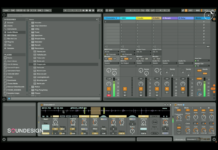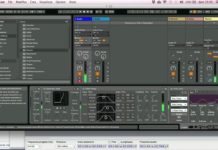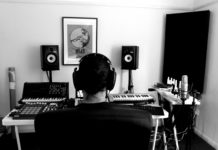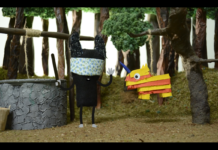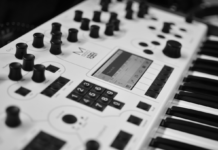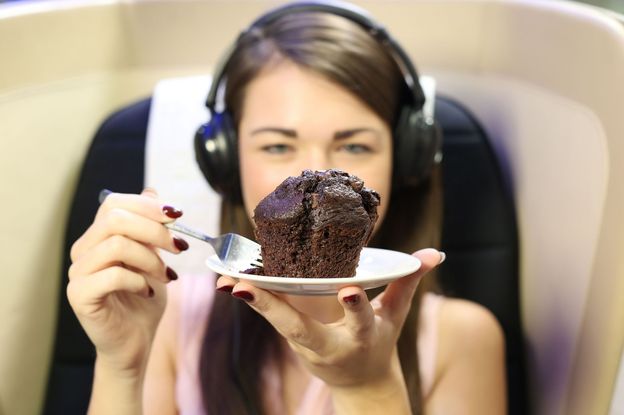The ancestral connection between man and food has always been considered an important field of anthropological and social studies.Â
Food is nourishment and living, but it also leads to wars, where entire populations are defeated through starvation, and it enriches multinational corporations.Â
Today, food is more and more studied, designed, glorified and made spectacular. Thanks to these factors, it is raising to the next level. Not surprisingly, on TV there is a plethora of shows on the topic, but more about that later.
Join us in this three episodes exploration of Sound and Food! Let’s start from the beginning.
Sound affects the taste of our food
Acoustics, noise and background music can have a significant impact on the way our senses perceive what we eat and drink. For these reasons food and the drinks we eat in flight have a bad taste, or we failed to appreciate certain flavours of a precious glass of wine in noisy restaurants.
The exploration of sound and taste is relatively new. For example, think that the International Standards Organisation doesn’t include the element of sound in its definition of flavour:
“Complex combination of the olfactory, gustatory and trigeminal sensations perceived during tasting. The flavour may be influenced by tactile, thermal, painful and/or kinaesthetic effectsâ€
Indeed, eating is mostly thought of as a four-sense experience. We see the full platter, smell the fragrance, feel the texture in our mouth and taste the complex flavours as we chew. We hear sizzles and crunches too, but sound rarely takes part in the game. Yet, what we hear while dining is extremely important, because of synaesthetic tendencies (and cross modal sensory interactions).
British celebrity chef Heston Blumenthal says:
“Eating is the only thing we do that involves all the senses. I don’t think we realise how much influence the senses actually have on the way we process information mouth-to-brainâ€
Blumenthal was a pioneer in exploring relationship between sound and food, making it also a business. The dishes of Sound of the Sea proposed in his restaurant Fat Duck, in fact, are accompanied with a small iPod in a conch shell, which plays sounds of seagulls and ocean waves.
Here’s him talking about it in more details:
The sound of chew itself plays an important role
In three separate experiments, researchers from Brigham Young University and Colorado State University looked at the effect of food sound salience.
One experiment showed that even prompting people to think of the sounds of eating can decrease consumption. In one study, participants consumed snacks while wearing headphones that played noise at different volumes. Results showed that louder noise masked the sound of chewing, causing participants to eat more. Those in the group with the loudest sounds ate 4 pretzels, while the “quiet” group ate 2.75 pretzels. The authors call this the Crunch Effect.
Ryan Elder, assistant professor of marketing at Brigham Young University, says about it:
“Sound is typically labeled as the forgotten food sense. But if people would focus more on the sound that food makes, consumption could reduceâ€
The food Chain are very intriguing podcasts, available on BBC website. Some episodes explore the concept of sonic seasoning, which considers how different sounds accentuate sweetness, bitterness or spiciness.
You can read more about this topic here , with an episode that examines the science that links our ears and taste buds with a journey into the brain flavour network and here another one about using sound as a sugar substitute. Listening to your own chewing may counteract obesity and listening to a certain genre of music may counteract diabetes.
Sonic seasoning:Â a scientific field that uses sound to make food taste better
There are several studies on the topic. Here is a series of findings:
The potato chips were perceived as being crisper and fresher when either the overall sound increases or the high-frequency sounds (in the range of 2-20 kilohertz) are amplified.
The taste of borscht (an Ukrainian sour soup) would taste repulsive when hearing a 50 Hz tone , and briny pickle when hearing a 3000 Hz tone.
A staccato noise really brings out texture in cheese because it improves perception by heightening the sensation of sinking our teeth into nibs of calcium lactate.
Sound Designers composed some soundtracks to effectively amplify the sensation of chocolate’s creaminess and sweetness.
Brass instruments are generally ideal for suggesting and replacing bitter tastes.
Beer-drinkers find their brews are more bitter when consumed while listening to low-pitch notes; and sweeter when coupled with higher pitch tones.
Listening to music should make wine taste more expensive (there is also a specific album called Sonic Seasoning: Wine Enhancement).
Slow music can result longer lasting flavours, while the more up-tempo the music is, the more quickly flavour fades .
The more you like the music, the more you will like what you are tasting.
In order to emphasise wine properties through the interaction of ultrasound and wine molecules, enologists have idealised a sonic decanter.
And there is also another aspect, that goes under the name of misophonia, meaning eating sounds can make people angry…
But we are pausing here for now and we will continue in Part 2. Let’s conclude with the most pleasant food sounds according to The Huffington Post. Or let’s put the headphones on to enjoy this video:
- Sonic Adventures in Food – Part two - March 31, 2017
- Sonic adventures in food – Part one - March 15, 2017
- Is there sound on Mars? The mystery of generating and receiving sounds on the Red Planet - May 2, 2016










